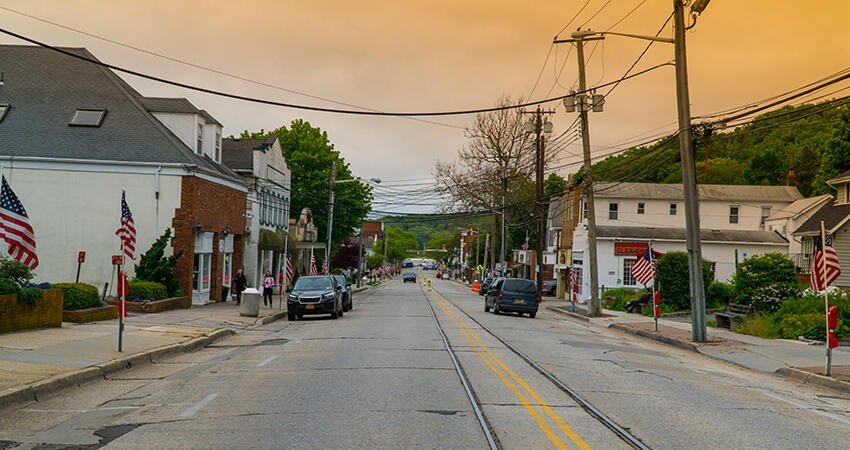
(BrandonKleinPhoto/Shutterstock)
Reducing Affordable Housing Barriers Will Be Critical to Addressing the Mounting Rental Crisis
Rent increases are reaching historic highs across the country, even in midsize and smaller communities long considered affordable. For years, researchers and advocates have sounded the alarm about the mounting affordability crisis, but the situation has only gotten more dire. Structural barriers cause rising rents to hit households with low incomes and communities of color the hardest, requiring many to spend more than half their income on housing and increasing the likelihood of homelessness, eviction, and housing instability.
Addressing barriers to financing and building affordable housing will be critical to ensuring the crisis doesn’t further hurt the groups most vulnerable to economic and rental shocks.
How we got here
Current rental prices reflect of years of underbuilding amid increasing demand. All housing construction plummeted in the early 2000s as financing for housing construction dried up. Building rates have yet to fully recover, and multifamily construction faces new challenges because building costs have increased. As a result, new construction has been increasingly concentrated in larger buildings (PDF), which typically charge more to rent, rather than constructing multifamily units affordable to households with lower incomes.
There are two main drivers behind the drop in development: lack of financing for units and barriers to building. Credit conditions have tightened significantly, restricting access to credit for new building projects. Affordable housing projects are often incorrectly seen as high-risk investments and are offered less favorable financing terms compared with other properties.
On the construction side, the lack of developable land is a huge barrier. Land is scarce partly because local zoning restrictions dictate what can be built and where. These policies prohibit building multifamily homes on 75 percent of land in most American cities, and regulatory costs are estimated to increase the price of a new single-family home by more than $90,000. Similarly, community opposition to new development, or NIMBYism, prevents or slows building, especially of multifamily units. Building material and skilled labor shortages are also increasingly affecting construction projects.
Despite construction lags, the US population continues to grow. The US currently has a housing supply deficit of 3.8 million units. This deficit is even higher for families with extremely low incomes, at 6.8 million rental units. In the rental market, these households must compete with high- and middle-income renters for the limited number of units affordable to them. This will only worsen as competition for rental units increases, affordable supply continues to dwindle, and more people with higher incomes move into less expensive units.
Improving financing for affordable housing
Expanded rental assistance and other financial support can keep renters housed in the interim, but significant investment is required to address our current affordable rental housing shortage. A variety of federal programs were designed to support the construction of affordable housing, including the Low-Income Housing Tax Credit, Community Development Block Grant, and HOME programs. Though these programs have been a critical driver of construction, they cannot meet the immense need at current funding levels. Both increasing funding and encouraging new sources of gap financing could boost construction.
Reforming the housing finance system alongside increased investment will be critical to promoting long-term affordability. On the smaller scale, private institutions can partner with federal programs to support affordability, such as providing low-cost financing to encourage use of rental subsidies in strong markets. Lenders can also recognize the low risk associated with affordable housing developments and provide more favorable financial terms, including lower interest rates and flexibility when structuring transactions.
Eliminating barriers to construction
Reducing obstacles to building will also be critical to addressing the housing gap. Communities can reduce, or altogether eliminate, single-family zoning to allow building both taller and smaller to increase density. Inclusionary zoning laws (PDF) encourage, or even require, developers to set aside a percentage of for affordable housing. These laws typically require affordability for at least 30 years, or even in perpetuity, and have created an estimated 173,000 affordable units that tend to serve residents with moderately low incomes.
Amending local requirements may not directly lead to the construction of affordable units for people with the lowest incomes, but these reforms will decrease competition and take pressure off the rental market (PDF), lowering prices for all.
A one-shot solution doesn’t exist
This rental crisis has been building for decades, and there is no quick fix to head off these rising rental prices. It will take substantial investment combined with policy reform to address the factors that led us here. As national attention on the rental market continues, local and federal leaders can use this moment to take steps toward tackling the roots of this crisis.


